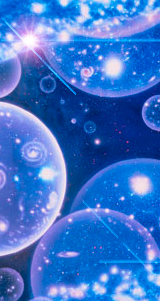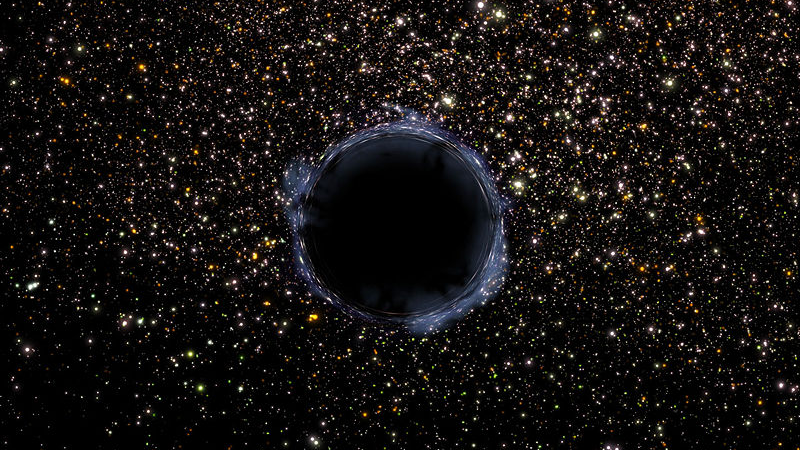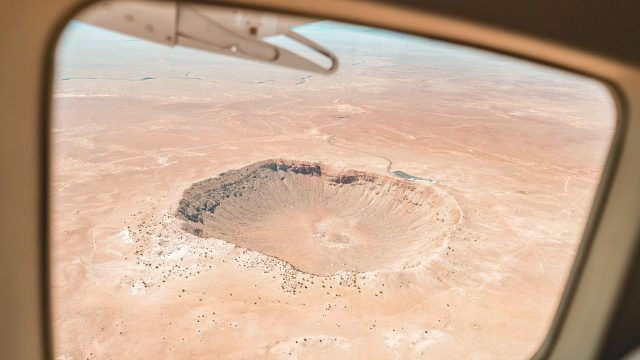Could there be a parallel universe identical to our own?
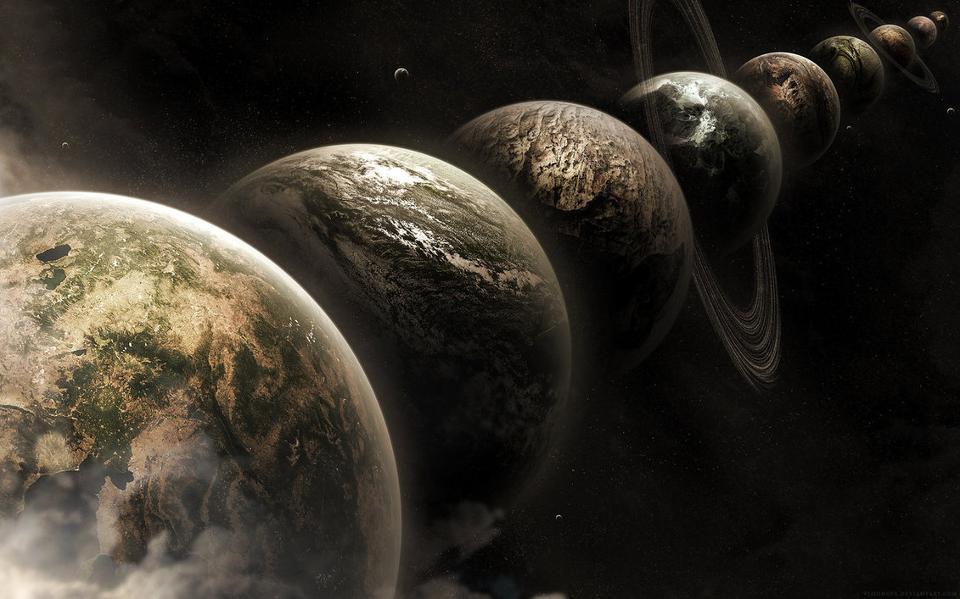
- The existence of multiple universes sounds like science fiction, but observations within theoretical physics suggest it is possible, and potentially inevitable.
- A key question in this speculative scenario is whether there is a finite or infinite number of universes in the multiverse.
- In any case, what we know so far indicates that, even if there is an infinite number of universes in the multiverse, what happens in them is in no way related to what happens in our own universe.
One of the most compelling ideas in all of physics sounds like pure fiction, but it could actually describe our reality: the idea of a multiverse. In the multiverse scenario, what we know as our universe is just one of many universes that independently and simultaneously exist in parallel to our own. Although there is no compelling evidence that points toward either the existence or nonexistence of the multiverse, it provides us with a rich area for exploration, because the predictions of its existence are firmly rooted in theoretical physics phenomena that are definitively known to exist.
If we presume that:
- the hot Big Bang, which gave rise to the observable universe as we know it, was preceded by cosmic inflation
- all of the particles and fields within the universe are fundamentally quantum in nature
Then it follows that the existence of a multiverse is all but inevitable. It opens up a rich realm of physical possibilities that include not only parallel universes, but also an infinite number of them out there. If that’s the case, there could even be parallel universes identical to our own, where reality “forks” each time a quantum outcome occurs. Here’s what’s possible within a scientific consideration of the multiverse.

Credit: Pablo Carlos Budassi; Unmismoobjetivo/Wikimedia Commons
The motivation for a multiverse
To understand why physicists assert that a multiverse ought to exist, you first have to understand a few facts about the universe that we observe. One fact is that we have a boundary to the part of the universe that we can access: a boundary in time. The universe as we can see it began some ~13.8 billion years ago in an event known as the hot Big Bang, where the universe was hot, dense, filled with matter and radiation, and was expanding, cooling, and gravitating from that initial state. The farther we look back in space, the farther we wind up looking back in time, all the way to the boundary of the hot Big Bang: 13.8 billion years ago in time and 46.1 billion light-years away in space.
However, you can’t go back to arbitrarily early times, because if the universe had exceeded a certain temperature and density, it would have properties we specifically observe it not to have. Instead, observations are far more consistent with the notion that the hot Big Bang was preceded and set up by a period of cosmic inflation, which:
- stretched the universe’s curvature so that it would be indistinguishable from flat
- inflated away any problematic, unobserved high-energy relics predicted to form at high temperatures
- gave the universe the same energy density everywhere, with quantum fluctuations, which occur during inflation, superimposed atop that uniform energy background
When inflation comes to an end, we get a hot Big Bang with the necessary properties to reproduce the observable universe.
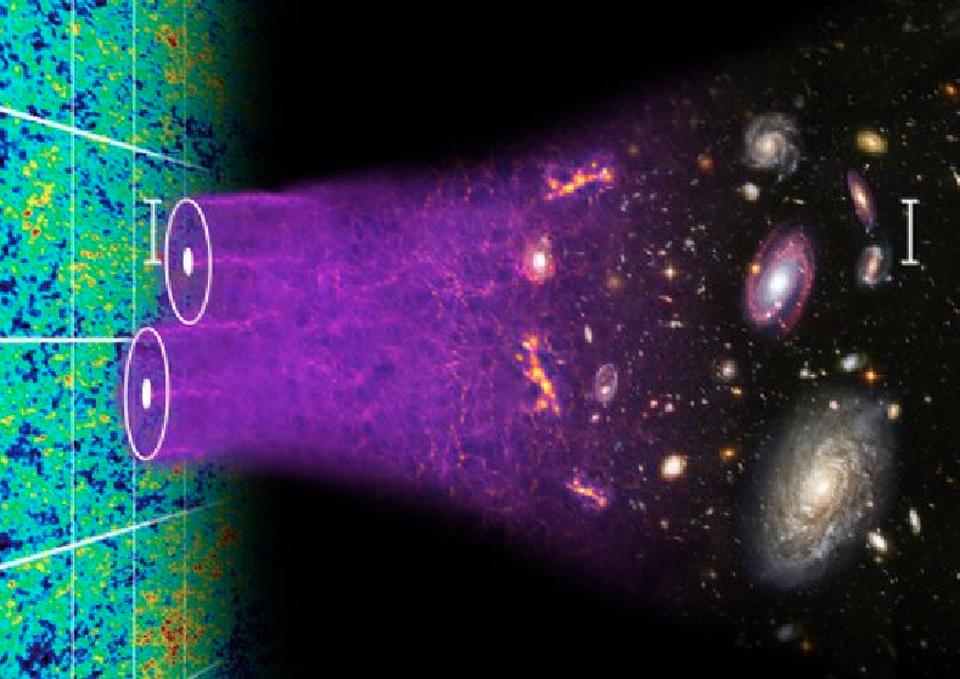
Credit: Chris Blake and Sam Moorfield
Typically, we like to visualize inflation as a simple field: it has certain properties that affect the space over which the field is present. As long as the field remains in this inflationary state, where the fabric of space has a large energy inherent to it, space will expand relentlessly and exponentially, so that the distance between any two points successively doubles with each passing interval of time.
As long as the field remains in this inflationary state, inflation continues, stretching the fabric of space, diluting everything in it until the field decays. At that moment, inflation ends. As the energy gets converted into matter and radiation, the universe heats up to a very high (but not arbitrarily high) temperature, signifying the beginning of the hot Big Bang.
In actuality, however, we know that whatever field drives inflation is overwhelmingly likely to be quantum in nature. That means, as inflation goes on, there’s a certain probability that the field will: “roll” into the valley where inflation ends; a certain probability that it won’t and inflation will continue; and even a certain probability that the field will “roll” in the wrong direction, taking us farther away from inflation’s end. And — here’s the counterintuitive part — because the inflating universe continuously creates new space, all of these possibilities can occur simultaneously in different regions of the inflating universe.
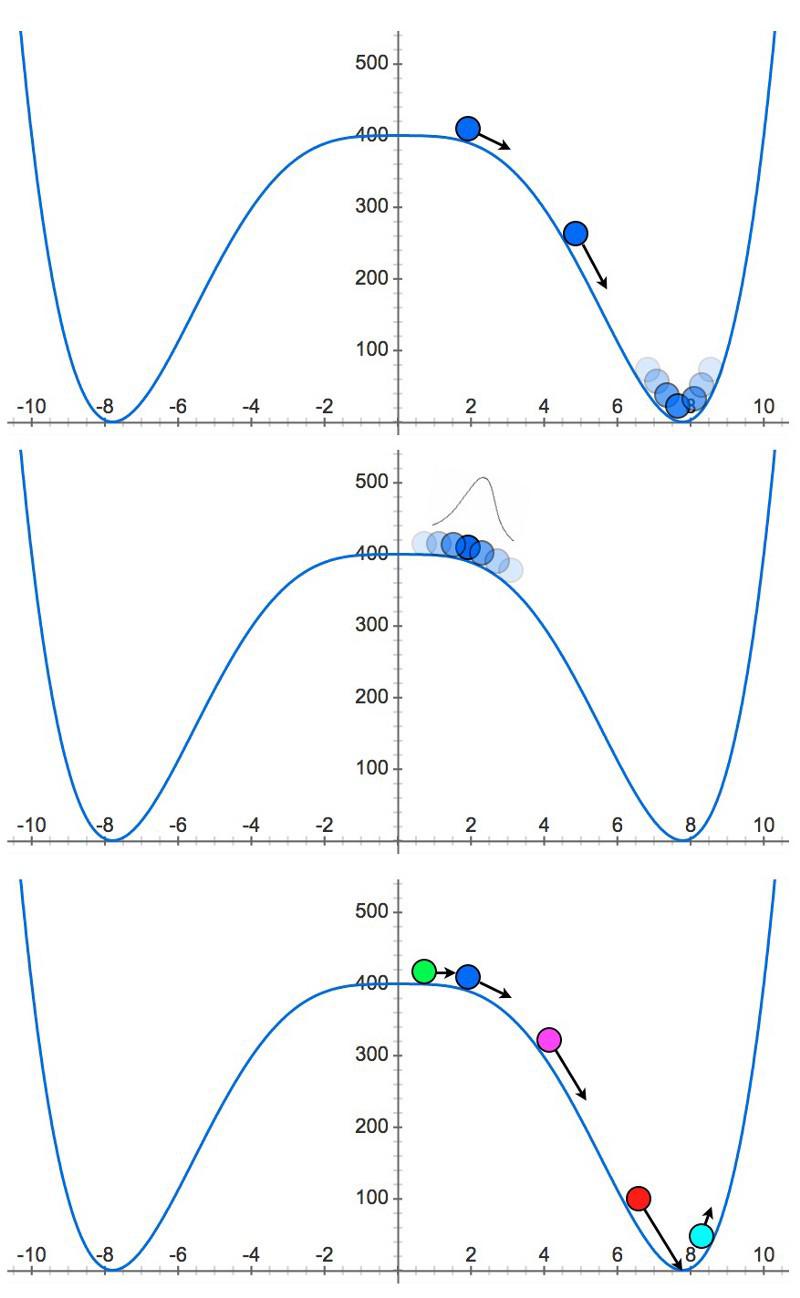
(Credit: E. Siegel/Beyond the Galaxy)
This sets up a fascinating scenario to consider. As long as inflation occurred in the past, which we have copious evidence that it did based on what’s imprinted in our universe, it implies the existence of a multiverse. What’s going on is the following:
- inflation occurs, stretching the universe and creating new space
- in some places, the field “rolls” into the valley, bringing inflation to an end
- this results in the creation of hot Big Bangs in those regions: what we might call “a universe”
- in between those universes is more inflating space, where inflation doesn’t end but continues on
- new space gets created as the universe expands
- in other places, the field rolls into the valley, bringing inflation to an end there with more hot Big Bangs and more universes
- meanwhile, inflation continues in the regions where it didn’t end, creating more space
And so on.
Fascinatingly, it’s fairly easy to show that if you want to create a scenario where we get enough inflation to set up the hot Big Bang with the properties we observe, you will always get a multiverse — one where independent, disconnected universes are always being born, forever separated from one another by space that continues to inflate eternally, while new universes and new hot Big Bangs continue to spawn. As long as we’ve got this part of the story correct — and the evidence overwhelmingly indicates that we have — the existence of a multiverse is predicted by today’s best science.
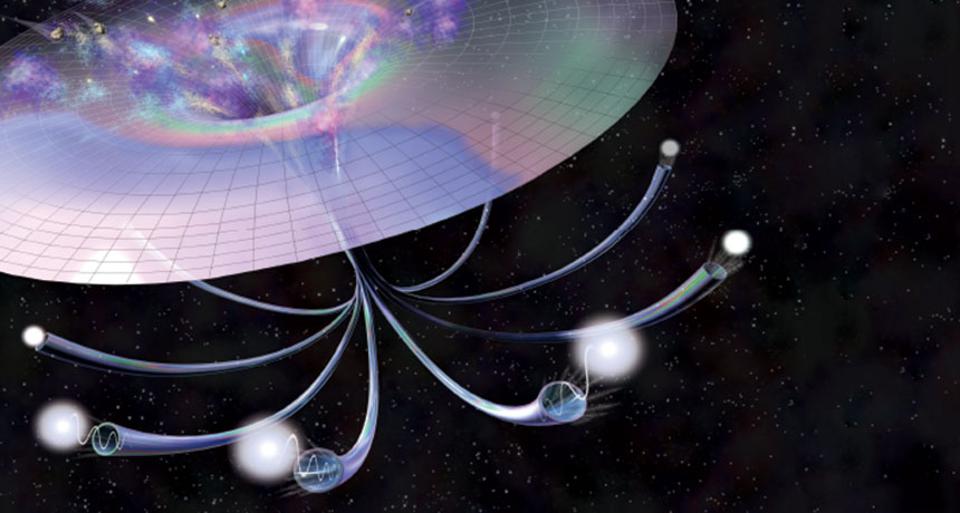
Credit: Nicolle Rager Fuller
Are these universes related?
Now, this is where we have to enter into speculative territory. We know that inflation must occur at an energy scale that’s significantly below the Planck energy scale, otherwise we would see signals in our universe that don’t exist. What we don’t know, however, is supremely important. We don’t know how inflation began, or whether it even had a beginning; it’s possible that inflation was the default state of the universe that was happening eternally, until it ended in our region of space and our universe was spawned.
We don’t know whether there are any entangled properties between these different universes within the multiverse. We don’t know whether all of the universes that are spawned have the same physical laws and fundamental constants, or whether there are dynamics that govern these laws and constants that somehow get “set” either during inflation or the final transition to the hot Big Bang. Additionally, we have no idea how to quantify the probabilities of these different outcomes: what cosmologists working on it call the measure problem. These universes are predicted to exist, but we don’t know how many of them there are, whether or how they’re related, and what similarities or differences they have relative to our own universe.
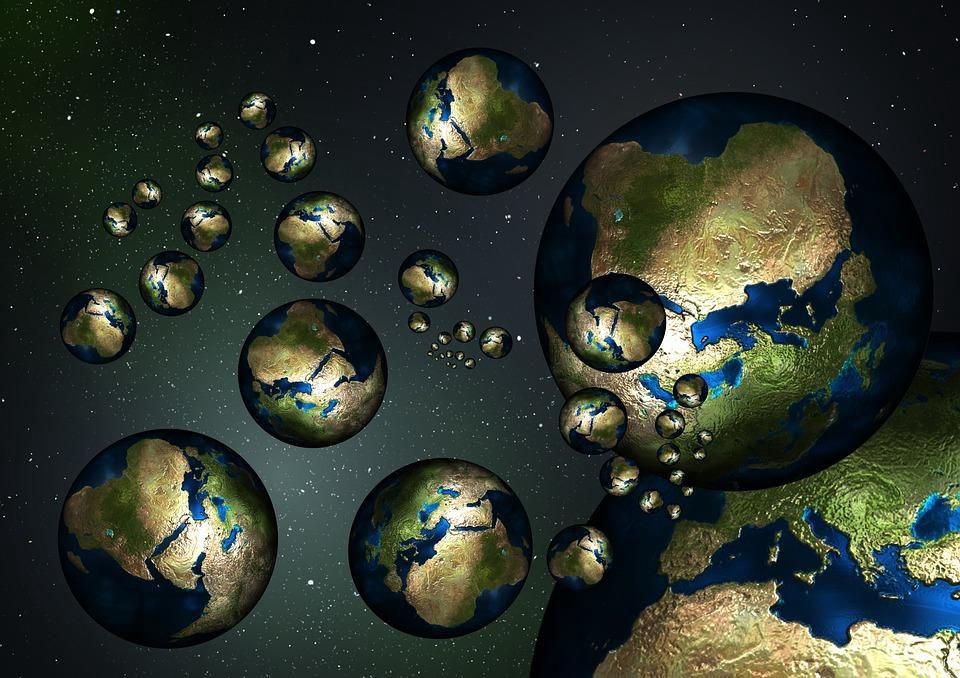
Credit: pixcove/public domain
However, the expectation — based on what we can measure within our own universe and what we can calculate based on the quantum properties that the known particles and fields possess — is that the laws and constants should be the same between universes, but the specific initial conditions should be different.
What does this mean?
It means that the overall properties of each universe should be the same, because they had a common origin: from the end of the same inflationary field. That means each universe should be born with the same average energy density, the same laws, the same symmetries, the same conserved quantities and conservation laws, the same Standard Model, the same rules of general relativity, and many other properties. The big differences, simply, should come in the form of quantum fluctuations that get superimposed atop this uniform background: the 1-part-in-30,000 imperfections that provided the seeds of cosmic structure in our universe. These should be random and on all scales, and our universe should be just one of an extraordinarily large set of possible outcomes.
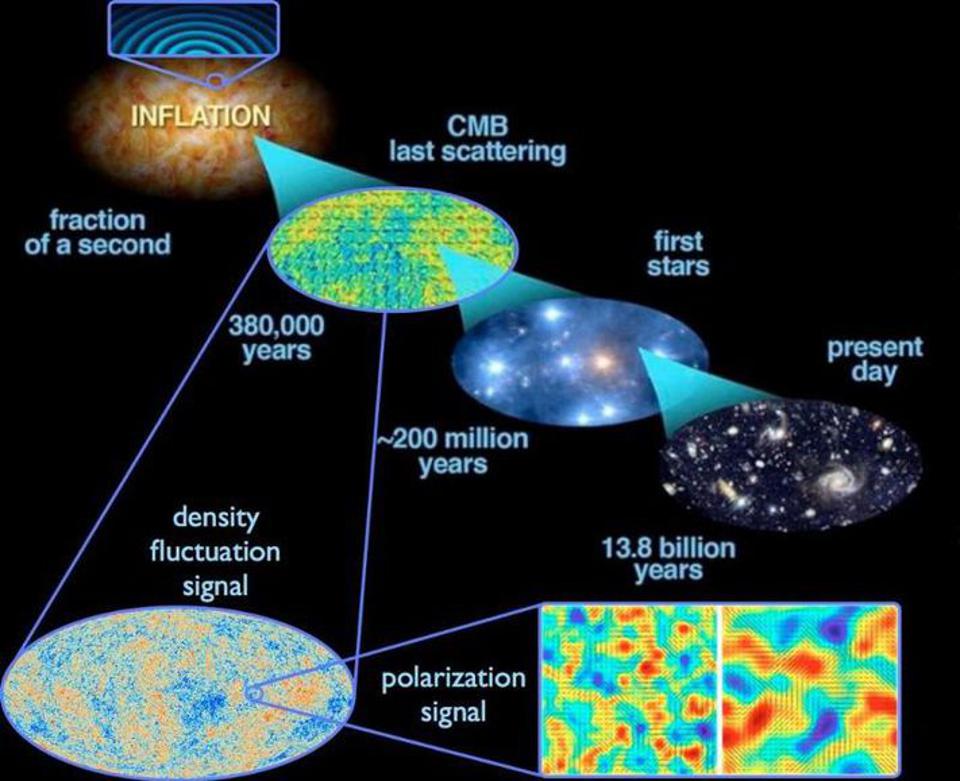
Credit: E. Siegel; ESA/Planck and the DOE/NASA/NSF Interagency Task Force on CMB research
And yet, if you have enough of these universes that spring into existence, there should eventually be one that comes along with the exact same initial properties as our own. Remember that everything that exists in our universe is finite: there are a finite number of particles, a finite amount of energy, a finite amount of time over which interactions between quanta can occur, and a finite number of possible outcomes. These numbers are astronomically large, but they are not infinite.
It may or may not be the same story when it comes to the number of universes that are spawned by inflation. If inflation has proceeded for a finite amount of time, then the number of universes we get increases exponentially with time, but always remains finite. If inflation has gone on for an infinite amount of time, then the number of universes must be infinite, and all allowable possibilities must have occurred in some universe.
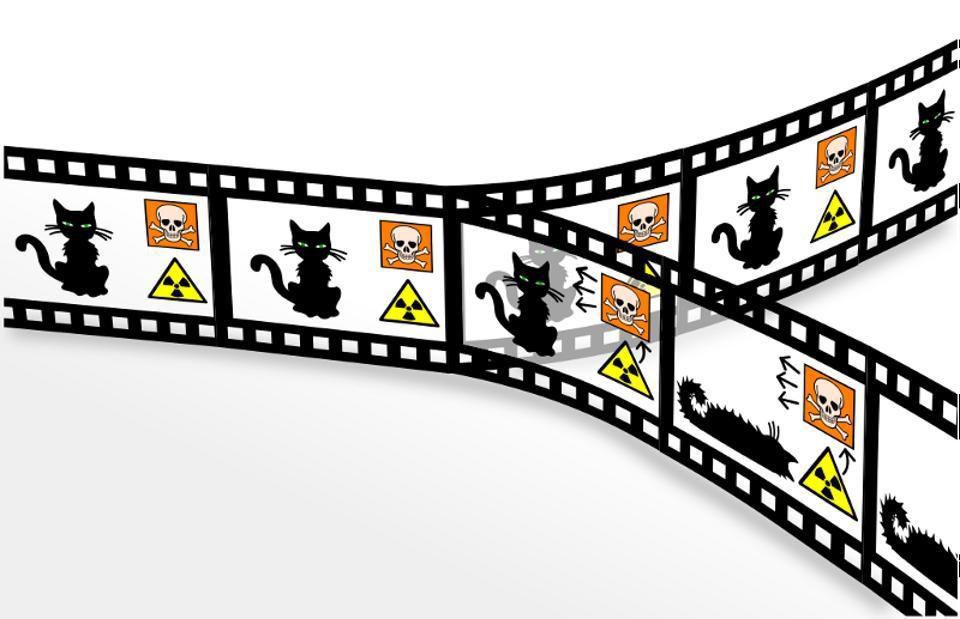
Credit: Christian Schirm/Wikimedia Commons
Isolated or interactive?
If inflation has gone on for only a finite amount of time, we can strongly say that, based on how the number of universes increases with time versus how the number of possible outcomes within a single universe increases with time, there are no parallel universes equivalent to our own within the multiverse. When we talk about the many-worlds interpretation of quantum mechanics, a finite number of universes is insufficient to hold all of the possible outcomes. We require an infinity of worlds. This itself requires an infinite duration to inflation to make a parallel universe identical to our own a possibility.
But if inflation has gone on for an infinite amount of time, then the existence of identical parallel universes isn’t just possible, but mandatory. No matter how large a finite number gets, even if it tends towards infinity over time, it will never become infinite after a finite amount of time.
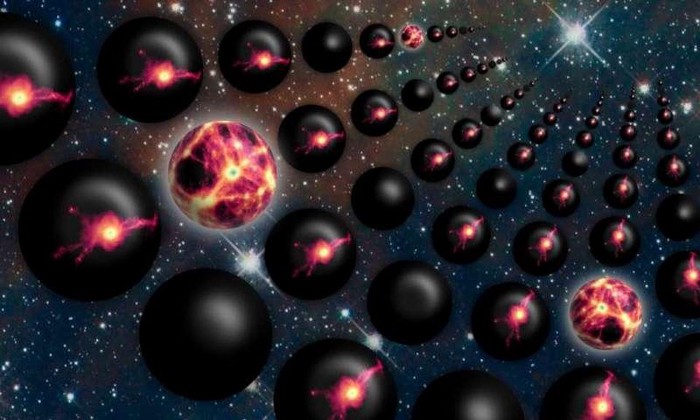
Therefore, even though there are an astronomical number of possible outcomes that could have occurred — including quantum interactions with a continuous set of allowable outcomes — an infinite number of parallel universes must contain them all.
However, even if such parallel universes do exist within a larger multiverse, even if there are an infinite number of them, not every imaginable effect is possible. You cannot transfer anything between universes, for example. Even though every universe emerged from the same small region of space — seeing as you can trace any two points back in an inflating spacetime until they’re arbitrarily close together — no information can ever be transferred between them; they are no longer causally connected.
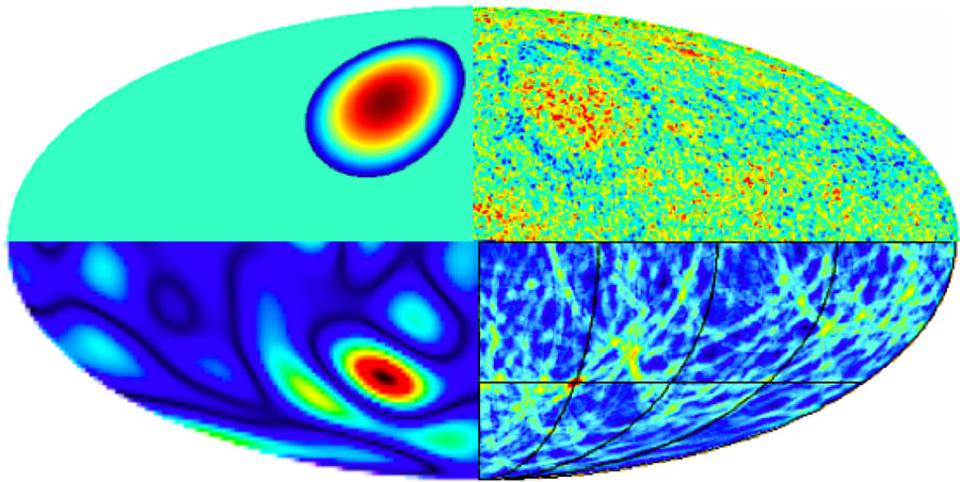
There is no retrocausality that occurs. In other words, what happens in one universe cannot affect another. We know how to quantify what would occur, during inflation, if any two universes collided, merged, or otherwise interacted, and we can definitively state that there is no such evidence of that having occurred in our universe.
Additionally, the quantum possibilities that now exist for our universe are only possible for future events whose outcomes have already been determined. The idea that multiple histories could overlap to create the reality we now inhabit — often colloquially known as the Mandela effect — is a physically inadmissible example of pseudoscience, unsupported by any evidence at all.

It’s extraordinarily tempting to consider the possibility that all of our mistakes and bad decisions, and the consequences that have ensued for ourselves and others because of them, might have turned out differently elsewhere. At another time in another place, perhaps there was a version of you that made better decisions at a critical juncture, and that version of you, in another universe, is having a better life and inhabiting a better world because of it. The idea of the multiverse, and specifically of parallel universes that were identical to our own until those critical decisions, offers us the hope that our past decisions are not as immutable as we currently believe.
And yet, that’s not at all what the science indicates. Even if inflation has been ongoing for an infinite amount of time, whatever occurs in the other universes that exist are in no way related to what is occurring or has occurred in our universe. Our past is fundamentally written. There are no opportunities arising in any multiverse scenario either to rewrite the past or to import, from another universe, an outcome that turned out differently. The multiverse may be inevitable and parallel universes may be possible, but they do not affect our universe is any measurable or observable way. Beyond the limits of science, all we have is speculation. Until the evidence catches up, no further definitive statements can be made.
